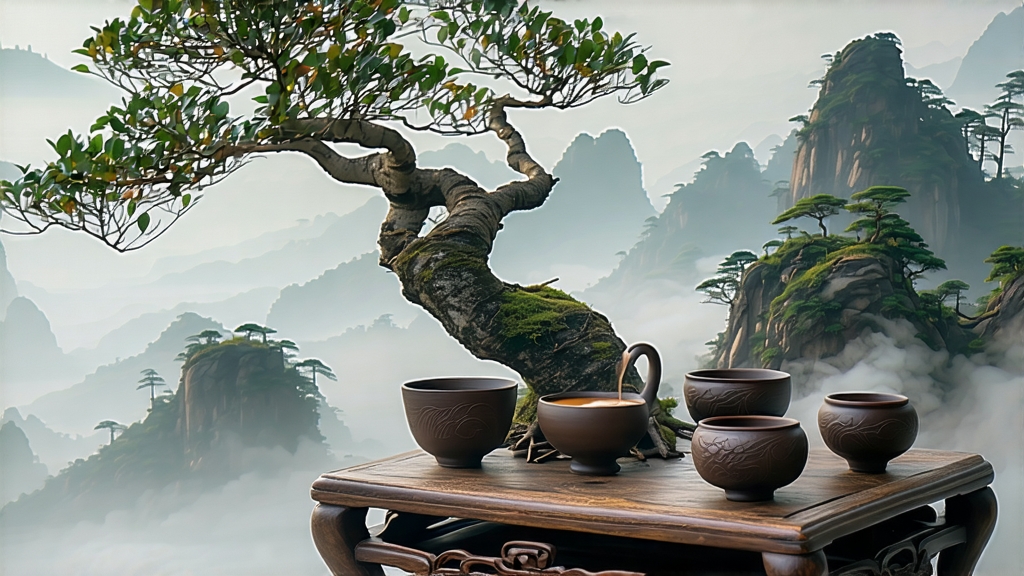
If oolong is the jazz of tea—improvisational, layered, forever balancing between green freshness and black depth—then Phoenix Dancong is the saxophone solo that makes the whole room fall silent. Grown on the fog-laced slopes of the Phoenix Mountains (Fenghuang Shan) in northern Guangdong, this storied sub-variety has been seducing merchants, monks, and modern baristas for almost a thousand years. Yet outside China it remains curiously overshadowed by its Fujianese cousin Tie Guan Yin and the rock-star Wuyi yancha. Allow me to invite you inside the scented world of Dancong, where one bush can smell like ripe mango, another like crushed jasmine, and a third like warm toast spread with alpine honey.
A Brief, Legendary Past
Local chronicles credit the Song dynasty court with first recognizing the “singing fragrance” of these leaves. When the young emperor passed through Chaozhou in 1278, villagers poured him an infusion from a 300-year-old tree; the cup allegedly carried the perfume of orchids and the sweetness of longan fruit. The sovereign named the tree Song Zhong—“Song Variety”—and imperial favor instantly elevated the tea from rustic offering to tribute worthy of the Son of Heaven. Growers began identifying individual trees that expressed distinct aromas, grafting them vegetatively so that each lineage kept its signature tune. By the Qing era more than eighty aromatic profiles had been catalogued, and the term dancong—“single grove”—was coined to emphasize that every patch of tea came from one mother tree rather than a jumble of seed-grown shrubs.
Terroir in the Clouds
The Phoenix range rises sharply from the Han River plain, topping out at 1,498 m on Wudong Peak. Granite bedrock fractures into acidic, mineral-rich soils while diurnal temperature swings of 10 °C coax the plants into slow, flavor-intense growth. Mist drifts through old-growth evergreens, filtering sunlight to the soft, speckled shade that Camellia sinensis loves. Most bushes are planted on 30–50° slopes accessible only by stone stairs; farmers still carry fresh leaves down in wicker baskets strapped to their backs, a scene little changed since Ming times. Because altitude tightens the picking window—spring buds may wait three weeks longer than in the lowlands—every harvest becomes a race between weather and perfection.
The Song Cultivar Family
Purists recognize three hierarchical tiers. At the summit stand the hundred-odd gushu, pre-Republic trees aged 200–600 years. Their gnarled trunks, often draped in air-rooted ferns, yield tiny leaf sets that sell for more than silver by weight. Next come the xiao shu, 30–80-year-old plantings propagated from the ancient mothers; they retain much of the original fragrance but offer friendlier volume. Finally, the taicha or terrace bushes, planted in the 1970s–1990s, give accessible everyday Dancong while still outclassing most high-yield oolongs. Within each tier the bushes are further sorted by aroma: the famous “Ten Fragrances” include Huangzhi Xiang (orange blossom), Zhilan Xiang (orchid), Xingren Xiang (almond), and the elusive Jiangwei Xiang (ginger-lily). No flavoring is ever added; the resemblance to fruit or flower is the plant’s own aromatic terpene vocabulary, coaxed out by craft.
Crafting a Singing Leaf
Harvest begins at dawn when two leaves and a bud are still cool from mountain night air. The pluck must be tender enough to snap crisply yet mature enough to carry redolent oils. After a brief solar withering, the leaves are moved onto bamboo trays indoors where they are alternately shaken and rested every hour for up to sixteen hours. This yaoqing (“rocking green”) bruises the margins just enough to initiate oxidation while keeping the vein centers green; skill lies in reading the leaf’s aroma shift from cut grass to peach skin to white flowers. Once the oxidation level hovers between 25 % and 35 %—the sweet spot where greenness departs but briskness remains—the leaves are pan-fired at 200 °C for three minutes to kill the enzymes. A hot rolling follows, twisting the leaf into the signature strip-like shape that allows gradual, even release of flavor in later infusions. The most distinctive step is charcoal roasting: bundles of tea are placed in bamboo cylinders above a low ember fire of local longan or lyc